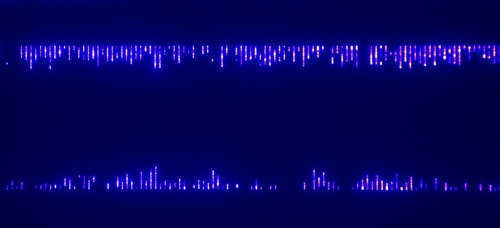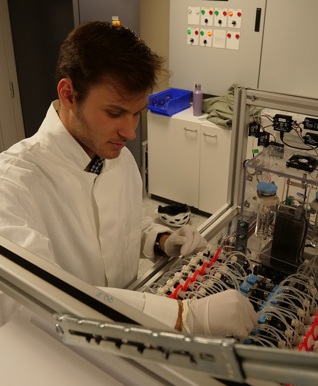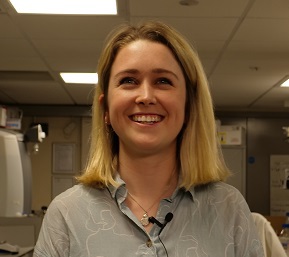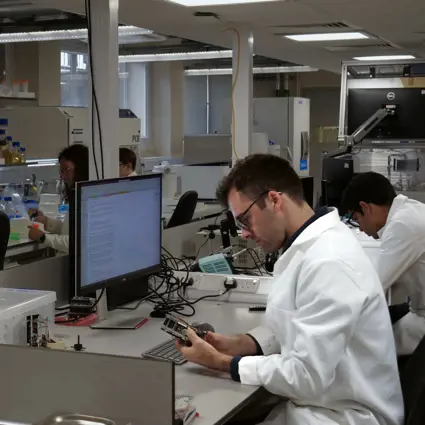More than 1.2 million people already die each year as a direct result of antibiotic-resistant bacterial infections*. But this number could soon rise dramatically: as resistance spreads, an increasing number of infections are becoming harder – and sometimes impossible – to treat as antibiotics become less effective.
"Antibiotic resistance is already a major challenge and one that is growing fast. Without effective action, we could soon be in a 'post-antibiotic era', where even minor cuts and common infections could be fatal, and standard medical procedures become highly risky" says Associate Professor of Engineering Science Harrison Steel.
To address this threat, in September 2023 President Biden announced a new Defeating Antibiotic Resistance through Transformative Solutions project (DARTS). Backed by up to $104 million of funding, it is the largest investment made to date by the USA’s Advanced Research Projects Agency for Health.
A step-change technology to diagnose antibiotic resistance
The aim of DARTS is to combine the power of artificial intelligence (AI), high-throughput testing and robotics to develop rapid platforms to test for antibiotic resistance. Led by Harvard Medical School, DARTS brings together more than twenty partners in the United States. As the only non-US partner in the project, Professor Steel’s research group were invited to participate due to their world-leading expertise in developing robotic applications to address biological challenges.
"Our aim is to develop a step-change technology to diagnose antibiotic resistance exponentially faster than current gold-standard methods", he says. "When a patient arrives at a hospital with a bloodstream infection, every minute matters and so choosing the correct antibiotic quickly is crucial to success. However, methods currently used to identify bacteria and their antibiotic susceptibility have remained largely similar for the past 50 years and are simply not up to the challenge."

Currently, bacteria are often tested for their susceptibility to drugs by growing colonies in the presence of different antibiotics. But these tests are slow, requiring hours or even days to understand how resistant bacteria are to a range of antibiotics.
"This means that clinicians often have to essentially guess which antibiotic may be effective based on their experience, or prescribe a broad cocktail that may be effective against multiple bacterial infections" says Professor Steel. "On the one hand, you risk prescribing an ineffective antibiotic, and on the other you risk fuelling further resistance to antibiotics in the community."
"We have spent years creating all the building blocks for a unique technological approach to cultivating, measuring, and ultimately understanding how bacteria behave and evolve. It is very exciting to have our work in this area funded and contributing to the DARTS team. We look forward to scaling up our technologies and translating them to clinical use to support the global fight against Antimicrobial Resistance."
Professor Harrison Steel
To address this, the DARTS project envisions ultra-high-throughput imaging and culturing platforms that can continuously and automatically track thousands of bacterial samples, probing how they might evolve over long periods of time in response to antibiotics. By collecting data across many experiments performed in the laboratory, advanced artificial-intelligence algorithms could then predict possible outcomes of treatments, and in doing so help inform clinical decisions.
Fast-forwarding standard testing approaches
"Based on our long experience of developing bioreactors and other robotic tools we have the capabilities necessary to build technologies that can fast-forward standard testing approaches" says Professor Steel. "We propose a system where samples are cultured in controlled environments which can accelerate growth of cells isolated from patients. This would enable different hypothetical scenarios to be tested in real-time, returning meaningful results within an hour. When done on a high-throughput scale, this would allow multiple drugs and different combinations to be tested in parallel."
Besides removing the guesswork in treating patients with life-threatening infections, such a tool would supercharge the search for new effective antibiotics while helping scientists to understand how different clinical conditions and practices impact the emergence and spread of resistance.
Developing these platforms will require engineering ambitious new microscopy hardware and high-throughput analysis software as Dr Idris Kempf, a Postdoctoral Researcher in the Steel Lab working on control algorithms, explains: "The goal of the DARTS project is to develop tools to analyse and influence the behaviour of individual bacterium, contrasting existing state-of-the-art technology that mainly allows characterising the average behaviour of a population of millions" he says. "With our new technology, we will continuously measure the activity of each bacterium and, based on these measurements, automatically make decisions on the subsequent actions to be taken, for instance exposing the bacteria to external stimuli for drug screening. The software that controls these processes will use novel AI-based technology to track the bacteria on microscope images, similar to what is used in self-driving cars, and deep learning to characterise the behaviour of bacteria in real time, such as the development of antibiotic resistances."
"The DARTS project provides a unique opportunity for me to engage in a broad, international collaboration focused on addressing critical issues related to antimicrobial resistance. I hope that this project will help to bridge the large gap between engineering and biology, and contribute to the growth of the engineering biology community."
A ‘rising star’ in engineering
The Steel lab’s participation in DARTS reflects their international reputation for working at the interface between robotic technologies and synthetic biology to design biologically-inspired solutions to scientific, environmental, and industrial challenges. In 2019 Professor Steel founded the Bioreactor platform venture Chi.Bio to disseminate an automated robotic system for biotechnological research and development as an open-source, low-cost technology. The platform is now widely used in academic and industrial laboratories worldwide, particularly benefiting those in developing countries who have more limited access to advanced analytical equipment.
Professor Steel is also a science advisor to several start-ups in areas that include biomanufacturing, environmental remediation, and new biomedical therapeutics. During the coronavirus pandemic, he played a leading role in the OxVent ventilator project and work to develop rapid testing for COVID-19 . Having only completed his PhD in 2019, Professor Steel has been identified as a ‘rising star’: in 2022, he was awarded a £100,000 Philip Leverhulme prize, and in 2023, he was named Young Engineer of the Year by the Royal Academy of Engineering.
"We were excited to expand our work with the team at Oxford University as our project's international partner. They have a unique track record creating robotics to solve outstanding problems in biosciences, and we are excited to apply this together to tackle the threat of Antimicrobial Resistance."
Professor Johan Paulsson from Harvard Medical School
"The DARTS project is the ideal partnership to develop and refine these technologies on a large-scale", says Professor Steel. "Working with the team of partners in the USA, we will be able to trial new tools in hospitals and generate real-world data to inform our future engineering efforts."
A new generation of interdisciplinary engineers
Besides developing critically-needed technologies, the project will also play a key role in training the next generation of interdisciplinary engineers.
 Marco Corrao, a second year DPhil student in the Steel research group, is working on the control and robotic systems needed for an automated laboratory platform for accelerated bacterial evolution. "Working on such an interdisciplinary project at the interface of automation, mathematics, and biology really pushes all of us to think beyond our specialties, fosters collaboration, and encourages the exchange of ideas", he says. "These are incredibly valuable skills to have as a modern bioscience researcher. It is also exciting to see our work contributing towards a goal that has such a high value to society, since antimicrobial resistance (AMR) has been recognised as one of the leading public health threats of the 21st century."
Marco Corrao, a second year DPhil student in the Steel research group, is working on the control and robotic systems needed for an automated laboratory platform for accelerated bacterial evolution. "Working on such an interdisciplinary project at the interface of automation, mathematics, and biology really pushes all of us to think beyond our specialties, fosters collaboration, and encourages the exchange of ideas", he says. "These are incredibly valuable skills to have as a modern bioscience researcher. It is also exciting to see our work contributing towards a goal that has such a high value to society, since antimicrobial resistance (AMR) has been recognised as one of the leading public health threats of the 21st century."
"Being involved with the DARTS project has been a brilliant experience so far. A recent highlight was to meet our project collaborators in Boston, where I also had the chance to present my work at the International Workshop on Bio-Design Automation. It was a great opportunity to meet other young researchers working at the frontier of biodesign automation, and to learn about some exciting directions towards which synthetic biology is moving."
"A high-throughput automated platform for microbial evolution will enable us to investigate how antimicrobial resistance emerges at the molecular level, which can ultimately inform the development of novel antibiotics. More broadly, it will also support the use of evolutionary methods across various research areas in the biosciences, with potential exciting applications in industrial biotechnology, biomanufacturing, and biological discovery."
 Meanwhile, second year DPhil student Jessica James is focusing on the biological aspects of the platform, particularly engineering the bacteria that will be grown inside the machine. "I am also working with other lab members to study the theory of evolving bacteria in the machine, and how we can model and optimise this process", she says. "The intended outcome of this project is to have a system that allows you to propose or improve a function of your bacteria, and to steer them in this direction by iterative rounds of mutation and selection."
Meanwhile, second year DPhil student Jessica James is focusing on the biological aspects of the platform, particularly engineering the bacteria that will be grown inside the machine. "I am also working with other lab members to study the theory of evolving bacteria in the machine, and how we can model and optimise this process", she says. "The intended outcome of this project is to have a system that allows you to propose or improve a function of your bacteria, and to steer them in this direction by iterative rounds of mutation and selection."
"I think this is a fascinating way of engineering novel functions that circumvents the need to fully understand the system you are developing. As a platform, it is not tied to a specific application and could be used to engineer tools for a range of fields including manufacturing, diagnostics and environmental monitoring."
"The Steel research group is a very stimulating place to work. Having previously worked in labs that were heavily biology-focused, it is very exciting to work on a project that combines a range of disciplines, including biology, engineering, programming and control theory."
Jessica James, DPhil student, Department of Engineering Science
"Our research group has grown into a very diverse community, including wet lab biologists, robotic engineers, and control theorists", says Professor Steel. "This enables us to tackle problems with a combinatorial approach that includes theoretical analysis, experimentation, and application-focused engineering. We are also fortunate at Oxford to be able to collaborate with many other excellent academic groups, besides the University’s various industrial partners."
Working together to build solutions
"Since setting up our research group in 2020 it has been very rewarding to see the team grow in diversity and expertise", says Professor Steel. "I am proud of how far we have come in taking blue-sky fundamental research and translating it to applications across biotechnology, control engineering, and beyond. Antibiotic resistance is one of the outstanding medical challenges of our time. I hope that with increasing international cooperation in this area we will be able to work together to build solutions – and do so more rapidly than the bacteria can create new challenges for us!"
*See Oxford University news item
Working on the DARTS project
DPhil students Jessica James and Marco Corrao and Postdoctoral researcher Dr Idris Kempf talk about their research in Professor Harrison Steel's lab and their experiences working on the DARTS project
Begbroke Innovation District: a living lab for sustainable development
Energy / Sustainability

